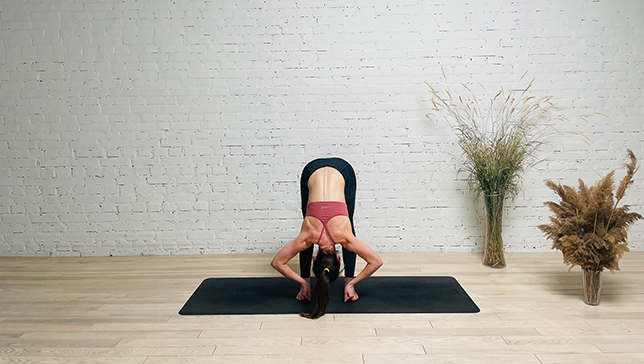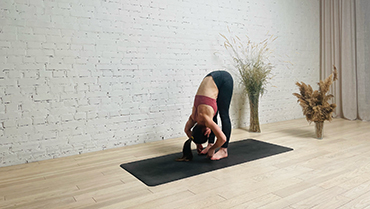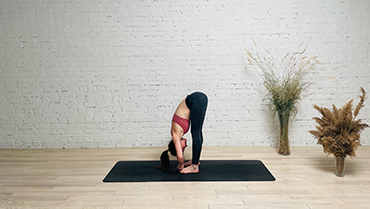Big Toe Pose - Padangusthasana

Contents
Big Toe Pose or Padangusthasa (PAH-DAHN-goos-TAH-sah-nah) is an excellent asana to make your body flexible, stronger, and improve its balance. The asana gets its meaning from Sanskrit terms ‘pada’ meaning foot, ‘angustha’ meaning big toe, and ‘asana’ meaning pose.
Also known as the Big Toe Pose yoga, it works on your legs, ankles, and hamstrings while activating your hips, arms, and shoulders.
Pose Detail
- Difficulty: Beginners
- By Type: Flexibility Yoga Poses, Restorative Yoga Poses, Strengthening Yoga Poses
- Body Position: Forward Bend Yoga Poses, Inversion Yoga Poses, Standing Yoga Poses
- By Benefit: Yoga Poses For Digestion, Yoga Poses For Stress Relief
Step-by-Step Instructions
Benefits and Contraindications
Calms the brain and helps relieve stress and anxiety
Stretches the hamstrings and calves
Improves digestion
Stimulates the liver and kidneys
Strengthens the thighs
Helps relieve headache and insomnia
Helps relieve the symptoms of menopause
Sciatica or abdominal hernia
High blood pressure
Heart problems
Ankle, knee, hip or lower back issues
Photo poses in different angles


Modifications, Props and Tips
- Tips for beginners
Beginners will likely find this pose challenging. Holding your big toes while keeping your legs straight and the natural curves in your spine is a difficult task.
Take your time. Don’t be in a rush to practice this pose with straight legs. Modify the pose by bending your knees as much as you need to to hold your big toes.
This will make it easier to hold your toes. It will also allow you to tilt your pelvis to help bring the natural curves to your lower back (and your entire spine). That’s why bending your knees is a great modification to help you work your way through the two most common misalignments.
- If you can’t hold your big toes with straight legs
You can either bend your knees as much as you need to so you can hold your toes, or use a yoga strap under the balls of your feet. If you have access to two yoga straps, you could even make small loops in each strap and wrap them around your big toes, holding one strap in each hand. This will help recreate the form and actions of Padangusthasana better than using one strap under both feet.
- If you are in your late second or third trimester
You may want to avoid this pose — your belly could get in the way. However, you also may want to keep practicing this pose. It’s your practice and your body. You are a better judge of what is right for you than I am. If you can get your feet wide enough apart so your belly does not press into your thighs, that will help make this pose more accessible.